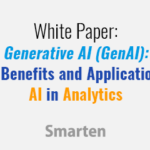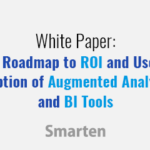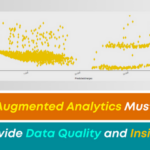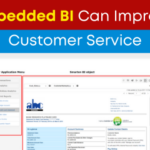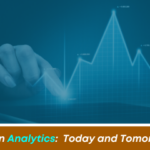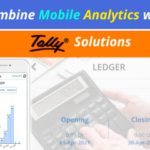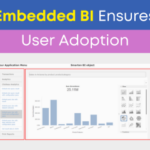How Do We Define Business Intelligence Today?
Business Intelligence (BI) is the lifeblood of an organization. Without business intelligence, the enterprise does not have an objective understanding of what works, what does not work, and how, when and where to make changes to adapt to the market, its customers and its competition.
You may be interested to know that TechJury reports seven out of ten businesses rate data discovery as very important, and that the top three business intelligence trends are data visualization, data quality management and self-service business intelligence.
As the Business Intelligence solution market evolves, it may be difficult for an organization to know when to invest in these tools, and which tools are best for enterprise and user needs.
‘Find out how business intelligence and analytics technology can support your enterprise and engage the experts to help you choose an approach.’
Before you can decide which BI tools and approach are right for your business, you must have a solid definition of Business Intelligence and the tools on the market today.
What is Business Intelligence?
TechTarget defines business intelligence this way: ‘Business intelligence (BI) is a technology-driven process for analyzing data and delivering actionable information that helps executives, managers and workers make informed business decisions.’
Business Intelligence is derived from systems, software, data warehouses, data in cloud storage, and other data sources and used to drive fact-based decisions to improve productivity and competitive positioning, and to increase revenue, customer satisfaction and other factors that figure into the success of the enterprise. BI tools leverage analytics and reporting, help the enterprise manage data and user access and plan for the future.
Business intelligence is built upon historical data, real-time data and raw data that is prepared and cleaned, integrated and analyzed to produce reports and information that is used to make confident decisions.
Let’s take a look at the differences between traditional and modern business intelligence:
Traditional Business Intelligence (BI)
Traditional BI tools include dashboards, reporting templates and formats, tools to establish and monitor key performance indicators (KPIs) and data visualization techniques. This approach typically focuses on descriptive analytics based on historical data to answer the question “What happened?” or “What is happening?”.
Modern Business Intelligence (BI)
Modern business intelligence (BI) tools focus on helping users easily access and share data, and giving them the ability to use data to drive intelligent action, and to achieve real-world results. It includes predictive and prescriptive analytics and is used to gain insight into data and plan for the future using sophisticated features like key influencer analytics, sentiment analysis, embedded business intelligence, assisted predictive modeling, anomaly alerts, natural language processing (NLP) for simple search analytics and other features.
The primary difference between traditional and modern BI lies in flexibility and accessibility. In the past, BI tools were designed for use by analysts or IT staff and these features were not accessible to business users nor did they provide guided, auto-recommendations in a natural language environment.
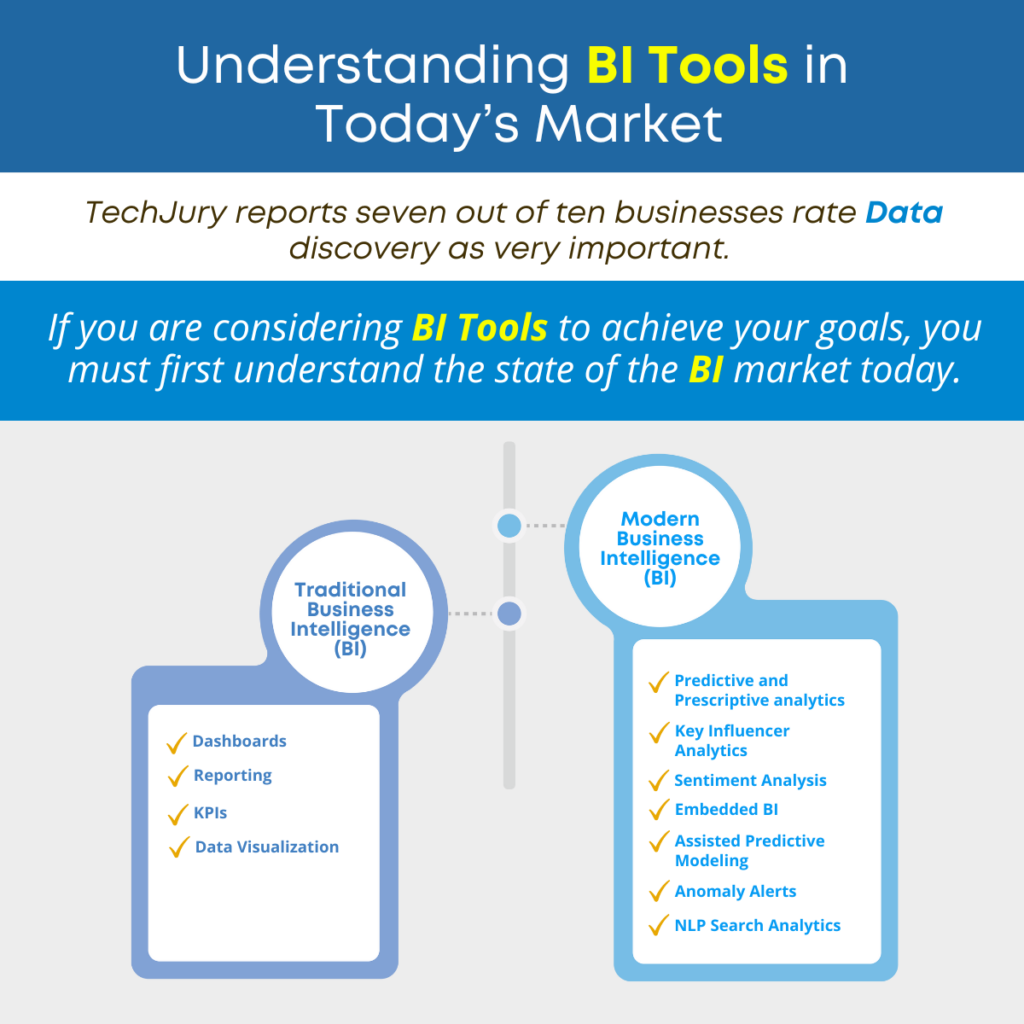
The world-renowned technology research firm, Gartner, has predicted that ‘smart/augmented, non-relational, search and visual-based data discovery capabilities will converge into a single set of next-generation data discovery capabilities as components of modern BI and analytics platforms.’ And that is exactly what is happening!
Modern BI solutions allow for and support user adoption, and deliver more benefit, better return on investment (ROI), and lower total cost of ownership (TCO) by empowering business users and holding each team member accountable for results.
The modern BI environment provides a foundation of data source integration, sophisticated analytical models and techniques and an easy-to-use, intuitive interface with auto-suggestions and recommendations for analytical techniques and report formats and publishing tools, alerts and analysis sharing that are easy for the average business user to adopt.
‘Business intelligence is built upon historical data, real-time data and raw data that is prepared and cleaned, integrated and analyzed to produce reports and information that is used to make confident decisions.’
Find out how business intelligence and analytics Technology can support your enterprise and engage the experts to help you choose an approach. You can improve business user Data Literacy, and ensure analytical clarity and results with seamless, Intuitive Business Intelligence And Reporting. Discover the next level of self-serve analytics with Augmented Analytics and explore the features and modules to see how your business can use analytics to achieve its goals.



